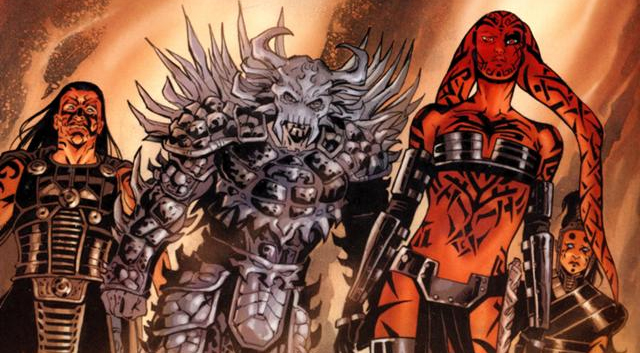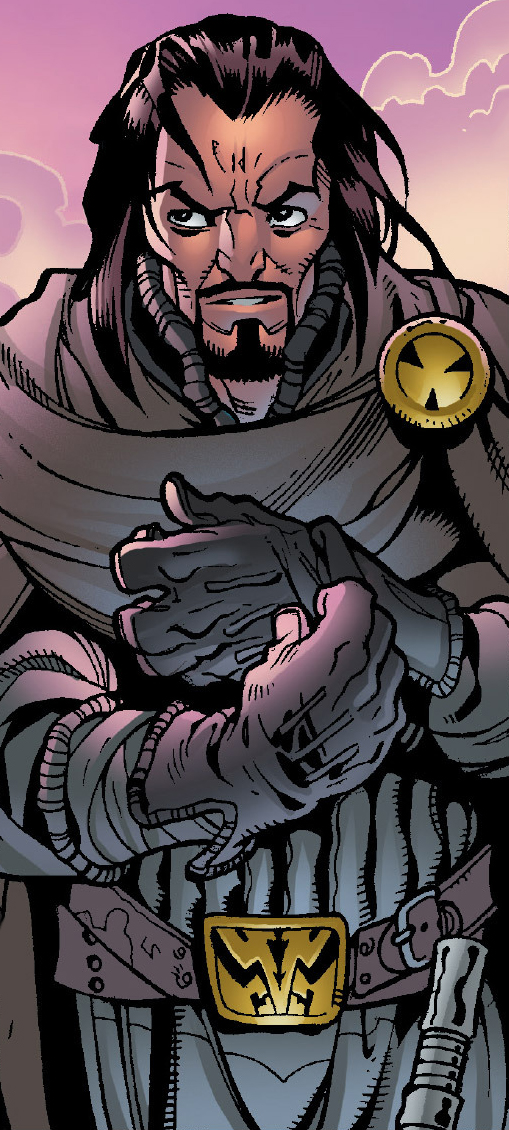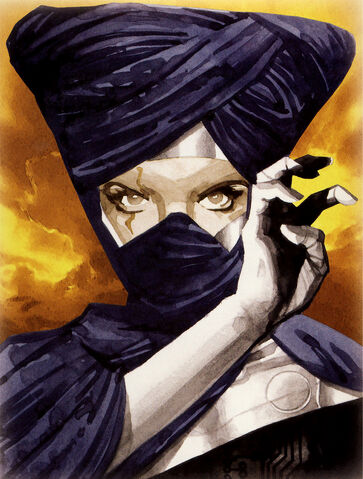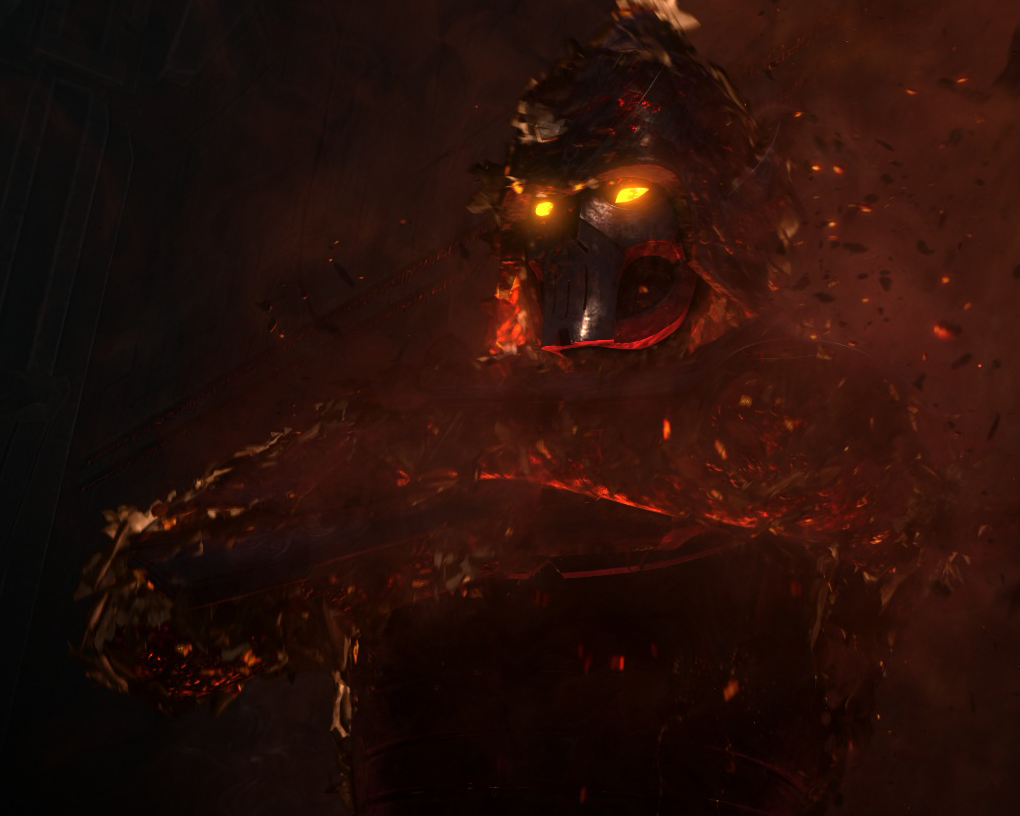
The Sith are the iconic antagonist of the Star Wars galaxy- black robes, red lightsabers, some cackling laughter and lightning- the very image of evil. We first meet them with the condition of one Master and one Apprentice, and later find out that they have a much richer history. This Rule of Two is perhaps the riskiest idea for long-term Sith survival, as their very nature would make it far too easy for just one overly ambitious and underpowered apprentice and one overconfident master to both end up dead, almost ensuring the extinction of the Sith. However, a large group of constantly infighting Sith could cause the death of many valuable Lords. Throughout Sith history, they tried several power structures, and their newest was perhaps the most sustainable and threatening. Who wouldn’t want a good villain that could sneak up on us at any time?
As we all know, the Sith began as Jedi who explored the Dark Side more deeply and were banished from Republic space for doing so. They found the Sith species in the Unknown Regions, and through a blend of alchemy and interbreeding plus years of isolation, became a powerful empire. We start to see the Sith again in the Great Hyperspace Wars, when the Sith accidentally find the Republic again and general chaos ensued. Every time we see the Sith of the Old Republic, the constant infighting and plotting amongst themselves is a common theme- sometimes to the point that we have to wonder how they get anything else done. We meet several versions of the Sith- the Hyperspace War, Revan and Malak creating a new Sith Empire, the triumvirate of Traya, Nihilus, and Sion descending into a civil war that nearly consumes the Sith as well as the Jedi, and the treaty of Coruscant that ends with a cold war between Jedi and Sith. Throughout this, the pattern is of a large group of Sith Lords, often plotting against each other to the detriment of their fellow Sith. However, the Sith still manage to survive and often win, constantly bouncing back and doing damage to the Republic and the Jedi.
Darth Bane is among the most iconic of Sith just for establishing the Rule of Two. After so many years of Sith chaos and infighting, Bane saw the need to focus Sith power rather than spreading it across a wide range of potentially unworthy candidates. At this time, the Brotherhood of Darkness was the most prominent Sith organization, constantly clashing with the Army of Light under the Jedi. This tumultuous time was a good spot for a new approach to Sith power, regardless of its consequences.
 Bane’s new philosophy is a marked departure from the Sith around him. At the time of the Dark Brotherhood, the Sith had eschewed the Darth title and its connotations, instead choosing to refer to themselves as Sith Masters. They are trying to save their apprentices to fight the Jedi rather than each other, and are greatly out of touch with Sith history despite sitting on a huge archive. It almost seems like we are seeing a crumbling Sith society instead of a powerful and dangerous one; though the Sith are still a serious threat, they are often consumed by their internal politics and unable to present a unified front against the Jedi. As Bane reads the Sith records and sees the destructive politics around him (and is discouraged from further exploration of Sith knowledge), he decides that the pointless infighting needs to end, and out of this the Rule of Two is born.
Bane’s new philosophy is a marked departure from the Sith around him. At the time of the Dark Brotherhood, the Sith had eschewed the Darth title and its connotations, instead choosing to refer to themselves as Sith Masters. They are trying to save their apprentices to fight the Jedi rather than each other, and are greatly out of touch with Sith history despite sitting on a huge archive. It almost seems like we are seeing a crumbling Sith society instead of a powerful and dangerous one; though the Sith are still a serious threat, they are often consumed by their internal politics and unable to present a unified front against the Jedi. As Bane reads the Sith records and sees the destructive politics around him (and is discouraged from further exploration of Sith knowledge), he decides that the pointless infighting needs to end, and out of this the Rule of Two is born.
The Rule of Two makes sense for Bane. However, he isn’t entirely like the rest of the Sith around him, and many are so concerned with their personal glory that they frankly don’t care about the philosophy behind keeping the Sith alive. Thankfully, most of them interpret the Rule of Two loosely, and many end up with acolytes and minions who are passingly familiar with the Sith. Many Holocrons and other nexuses of Sith knowledge emerge, making it possible for the overly curious to find out more than they ever needed to know about the dark side.
If there was one point that really could (and almost did) end large portions of the Sith tradition, it was under Sidious. Sidious had full intention of a Rule of One, with all his minor minions and acolytes around him, and the disappointment of getting a less-than-perfect apprentice in Darth Vader. Sidious is probably one of the most intelligent Sith we meet, and his willingness to spend time thinking about Sith history and philosophy is what makes him so dangerous. We find out throughout the Expanded Universe that a great many have trained under Sidious- Mara Jade, Vergere, Lumiya- a wide variety of minor Force-sensitive minions. Other than Darth Vader, none actually made it into the realm of ‘Sith,’ though many had enough training and resources to be dangerous.
The Sith ended rather abruptly when Sidious and Vader were killed. Sidious was working on a series of books about the Dark Side, and was familiar with quite a bit of obscure Sith history. The loss of information alone was one of the best ways to ensure the extinction of the Sith, and it could have easily happened. None of his minions were well-trained enough to take on the mantle of a Sith Lord, and after Sidious’s death, it is many years before someone else even tries.
During the rise of the New Republic, many Jedi flirt with the dark side. It is an ever-present temptation for them, and they are warned again and again how dangerous it can be. We meet the spirits of Ulic Qel-Droma and Exar Kun in the Jedi Academy on Yavin IV, and they do indeed bring Jedi students to the Dark Side. The difference between these dark Jedi and actual Sith is rather important; none of these students ever take on the philosophy of a Sith and are instead looking at a general view of the dark side. Throughout the Yuuzhan Vong war, several more Jedi come dangerously close to the Dark Side, but none of them actually count as Sith until Darth Caedus.
Jacen Solo is one of the most philosophical Jedi we meet. His choice after the Yuuzhan Vong war is to go on a journey of exploring ways of the Force, and finally he chooses to follow Lumiya’s teachings and become Sith. Lumiya herself was aware that she was not well-trained or qualified enough to actually be a Sith Lord in her own right- though through her work, someone else might be able to. Vergere, as we have found out, had trained under Darth Sidious long enough to have absorbed some Sith knowledge, and her equivocal ‘everything I tell you is a lie’ philosophy profoundly shapes Jacen’s worldview. Jacen becoming Darth Caedus was the first true Sith Lord in many years; even if he didn’t have access to much Sith history, he was firmly Sith in his outlook and interest in reestablishing the Sith. Had he survived and Tahiri become a Sith also, the Sith could easily have continued the Rule of Two.
Soon after Caedus’ death we meet the Lost Tribe of the Sith. They had split off from the rest of the Sith due to a spaceship-wreck, and had been cut off from mainstream Sith politics since the time of Naga Sadow’s Sith Empire, 5000 years ago. Their political structure is similar to that of the Sith at the time they vanished- a hierarchy of Lords, High Lords, and a Grand Lord. There are so many of them, with more ready to take up the mantle of power, that survival was possible as long as they remained isolated from the rest of the galaxy. There is always someone to step in to fill a power vacuum, and they’ve been isolated long enough that they are a serious threat to the Jedi and anyone else who happens to come near them- the common threads throughout many of the Sith resurgences.
Darth Krayt’s One Sith provide a balance between the Rule of Two and a large group of Sith. In his studies of the Sith from being on Korriban and discussions with Vergere, he comes to the conclusion that the Rule of One is the most practical. The One Sith are ruled by the Dark Lord with many lower Sith allowed to exist, and apprentices told to kill their masters to prove their abilities. The highly structured One Sith eliminate the infighting and plotting, and even after Darth Krayt’s death, the One Sith are able to restructure and return to hiding without having to lose large portions of their history and traditions.
 The major problem of the Rule of Two is the very nature of the Sith. They are highly competitive and constantly scheming against each other, and one slight misstep could have led to both Master and Apprentice ending up dead. No Sith really seems to have followed the Rule all that well; there were always acolytes and wannabes around, and Sith holocrons made it possible for non-Sith to discover their secrets and fall to the Dark Side. The resurgence of the Sith is often based on some curious Jedi running into a Sith artifact or spirit and exploring it a bit too deeply.
The major problem of the Rule of Two is the very nature of the Sith. They are highly competitive and constantly scheming against each other, and one slight misstep could have led to both Master and Apprentice ending up dead. No Sith really seems to have followed the Rule all that well; there were always acolytes and wannabes around, and Sith holocrons made it possible for non-Sith to discover their secrets and fall to the Dark Side. The resurgence of the Sith is often based on some curious Jedi running into a Sith artifact or spirit and exploring it a bit too deeply.
Following Sidious, it would have been too easy to lose the main Sith tradition started by Darth Bane. Out of this comes Lumiya and then Darth Caedus, while Darth Krayt’s One Sith take a different path. Both are entirely valid approaches, however we see quickly how easy it is to eliminate the Sith under the Rule of Two. Caedus didn’t have the time to acquire minor minions, Tahiri is not devoted enough to the Dark Side to really become knowledgeable about it, and the line of Sith ends there. It only reemerges under the One Sith.
Between the Lost Tribe and the One Sith, we have some winners for a power structure that can keep the Sith going, withstand powerful external threats, and pass down their knowledge to the next generation. The Lost Tribe’s strength is their isolation; the spaceship-wreck that stranded them was sufficiently long enough ago that finding them would have been difficult with so many uncharted hyperspace routes, and the Sith interpreted their disappearance as failure and therefore did not search for a missing ship. The Lost Tribe are quite a shock to the Jedi also; they definitely are not expecting to find many Sith hiding on a backwater planet. Even though the Lost Tribe does not survive contact with the Jedi well, they nonetheless managed to be a self-sustaining Sith organization for many years without imploding due to civil war or contact with the outside galaxy. However, their need for complete isolation and inability to function in a galaxy that has moved on since the time of the ancient Sith proves to be their undoing.
The One Sith also turn out to be dangerous by sheer numbers. When one individual dies, there are several others jockeying for their place, and it’s hard to positively determine that the Sith have been dealt with when there are probably others still hiding. Not being bound by the restrictions of the Rule of Two- and being fully aware of the mistakes of the past- make the One Sith compelling and dangerous. We often see that the Sith lose parts of their history by attrition or lack of interest, and only learn more when some unsuspecting person stumbles across a Holocron or a Sith tomb. If the chain of information is better preserved, the Sith are more able to draw from their past to stay alive. Darth Krayt uses the obscure power of dark transfer to survive- something that a Sith uninterested in knowledge would never have uncovered. The One Sith are already showing themselves to be more resilient and interested in long-term survival, setting up the Sith as a potential future antagonist.
Again and again, we see that the Sith are the most sustainable and dangerous when they are not a small number and are able to hide from the galaxy and stay hidden. As the primary antagonists, every time the Sith crop up they are usually soundly defeated. The Sith as a whole only are in jeopardy from this when there are few of them or they have lost their entire power structure, which does happen every so often. Each time the Sith survive and bounce back, it is because they are able to go underground and have several powerful Sith still alive.
 The Sith should not have counted on the Rule of Two being able to save them. Darth Bane’s phrase about the Rule of Two, “one to embody the power and one to crave it,” could have led to both master and apprentice dying. How much of their history do the Sith actually try to preserve? Many Sith are chosen not for being scholars or historians, but instead for being powerful warriors. Looking at history both real and fictitious, warriors are often not the people to maintain a culture’s traditions without being highly destructive. It’s quite a miracle that the many more martial Sith did not manage to utterly destroy many Holocrons and history. The Jedi certainly seem to find their fair share of Sith artifacts, often inadvertently assuring the survival of the Sith.
The Sith should not have counted on the Rule of Two being able to save them. Darth Bane’s phrase about the Rule of Two, “one to embody the power and one to crave it,” could have led to both master and apprentice dying. How much of their history do the Sith actually try to preserve? Many Sith are chosen not for being scholars or historians, but instead for being powerful warriors. Looking at history both real and fictitious, warriors are often not the people to maintain a culture’s traditions without being highly destructive. It’s quite a miracle that the many more martial Sith did not manage to utterly destroy many Holocrons and history. The Jedi certainly seem to find their fair share of Sith artifacts, often inadvertently assuring the survival of the Sith.
The Rule of Two is the most iconic Sith philosophy. However, over the years it became a liability due to the very nature of the Sith. By the time of Darth Krayt, the only way to ensure the survival of the Sith (when all is said and done, they’re a great plot hook and iconic to the galaxy)- was to have more than two. What if Sidious and then later, Darth Krayt, had one of the best ideas to maintain the Sith? By barely or not following the Rule of Two and collecting many minor minions, there was a good chance that one of them would be Force-sensitive enough to make a good apprentice. It opens up more opportunity for Dark Side acolytes to exist and find their way, but rarely allows them enough power to be a serious threat to the hierarchy. Darth Krayt’s Rule of One is by far the most sustainable path for the Sith, and it will keep them dangerous for years to come.

One thought to “One Sith Two Sith: Evil and Sustainability”
Comments are closed.